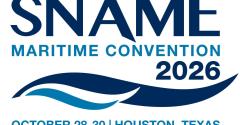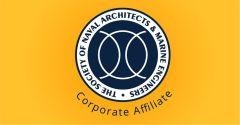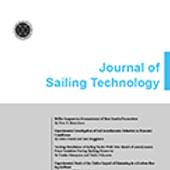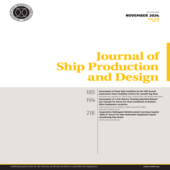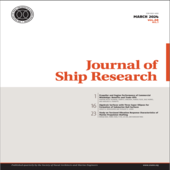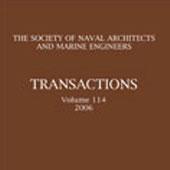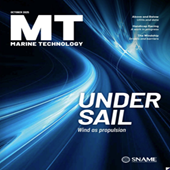SD-05 Advanced Ships and Craft
SNAME's T&R Panel SD-5 (Advanced Ships & Craft) is dedicated to the technology, design and engineering of ships and craft offering capabilities well beyond those achievable by conventional designs. This is generally taken to mean significantly higher speed or significantly enhanced ability to operate in high waves. A common term for them is "advanced marine vehicle" or AMV.
These higher levels of capability can be provided across a broad range of configurations: planing craft, fast multi-hull designs (e.g., catamarans and trimarans), hydrofoils, SWATH (small waterplane area twin hull) ships, WIG (wing-in-ground-effect) craft, air cushion vehicles (ACVs), surface-effect ships (SESs), hybrids of these, and novel concepts not yet envisioned. Seaplanes incorporate many AMV elements and are also included. In size, these ships and craft are generally at the smaller end of the scale, but not always: a large ship that attains high speed or seakeeping by means of an unconventional hullform or appendages may also be included.
No ship can be made to do everything well. Conventional designs tend to have a relatively balanced set of capabilities, but AMVs tend to be "unbalanced" in that they attain higher performance in some aspects of their functioning only by accepting reduced performance in others. For example, higher speed generally comes at the cost of reduced payload and range due to greater propulsive power and fuel consuming a disproportionate share of the weight-carrying capability. It also drives use of lighter materials and of engines and motors with higher power density. And most AMVs are inherently configured to use dynamic or powered lift to raise them up in the water to reduce the power required to push through it.
AMVs tend to have niche applications where their particular strengths have special value but their weaknesses don't unduly compromise their performance, and currently-operating examples of all of them can be seen in many places around the world. Although the costs to acquire, operate, support and maintain them tend to be relatively high, they can still be economically justified in appropriate applications. This may be especially true with uncrewed and autonomous craft, which need not provide space and support for crew or limit motions and accelerations for them.
The Panel provides a forum for discussion, sharing, and dissemination of information about new AMV technologies and developments. It encourages research to extend those technologies, promotes the writing of papers and reports documenting them, and works to educate the technical community, potential users, and the public about their capabilities and applications.
SD-5's membership includes recognized experts in designing and engineering AMVs, in their supporting technologies, and in their operational employments. Among them are government and private company employees, independent professionals, and academics and other researchers.
before. In a way, AMVs represent future-oriented technology that is particularly suited to them and will develop along with them.
If you are interested in joining this committee, please contact the Committee Chair
If you are interested in joining this committee, please contact the Committee Chair
Committee Members
-
Kevin A'Hearn
Chair
-
William Hockberger
Chair
-
Howard Apollonio
Committee Member
-
Michael Bosworth
Committee Member
-
Allen Ford
Committee Member
-
David Giles
Committee Member
-
David Helgerson
Committee Member
-
Russell Hoffman
Committee Member
-
Stephan Hooker
Committee Member
-
Ahmed Ibrahim
Committee Member
-
Tony Jang
Committee Member
-
Gabor Karafiath
Committee Member
-
Jonathan Kaskin
Committee Member
-
Robert Keane
Committee Member
-
John Kecsmar
Committee Member
-
Colen Kennell
Committee Member
-
Christopher McKesson
Committee Member
-
Timothy Mierzwicki
Committee Member
-
Chris Pappas
Committee Member
-
Mark Rice
Committee Member
-
Robert Roddy
Committee Member
-
Paul Roden
Committee Member
-
James Sandison
Committee Member
-
Roger Schaffer
Committee Member
-
Alfred Skolnick
Committee Member
-
Daniel Snyder
Committee Member
-
Les Sonnenmark
Committee Member
-
Jason Strickland
Committee Member
-
Tom Waters
Committee Member
-
William White
Committee Member
-
Sarah Wickenheiser
Committee Member
-
Michael Wilson
Committee Member


